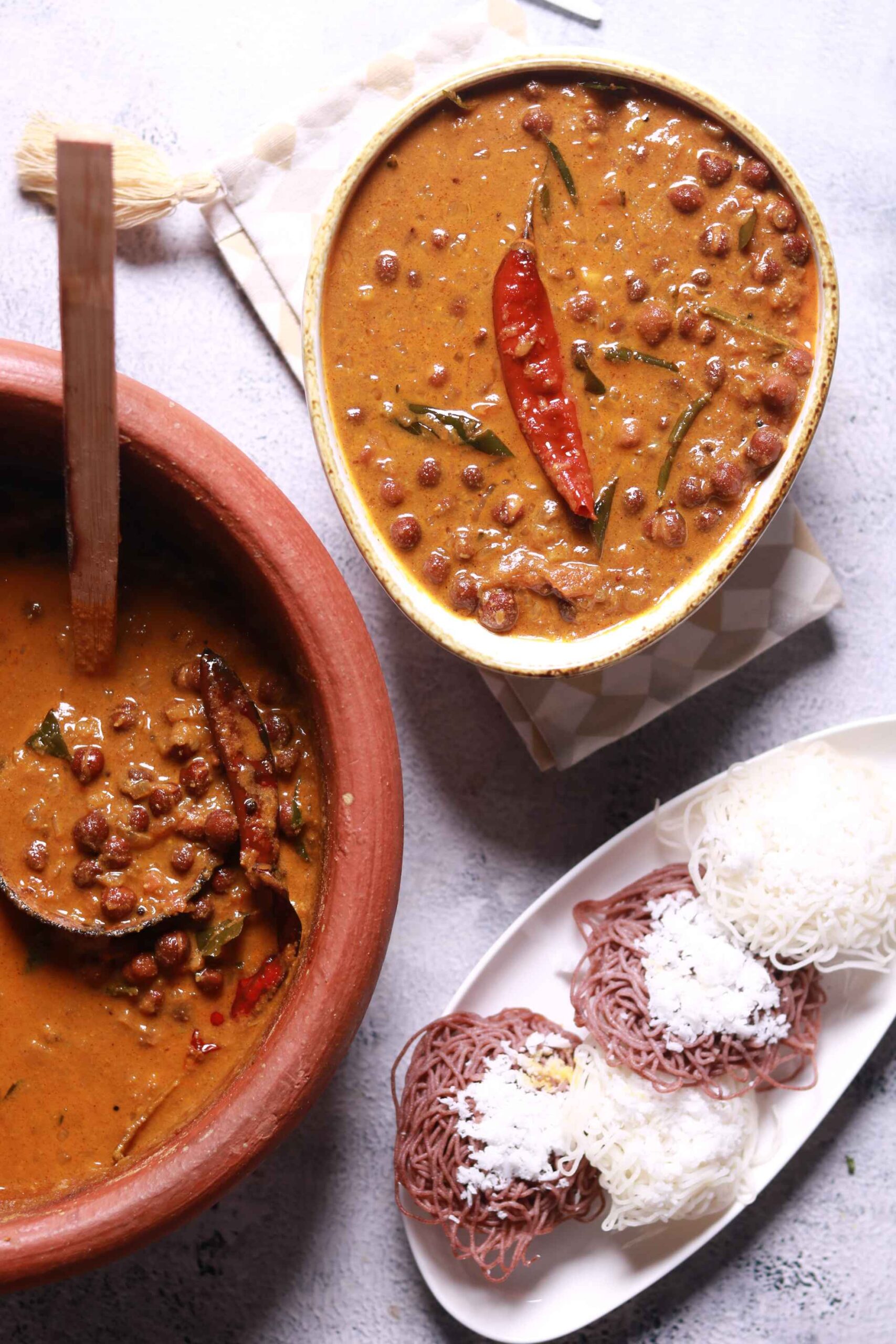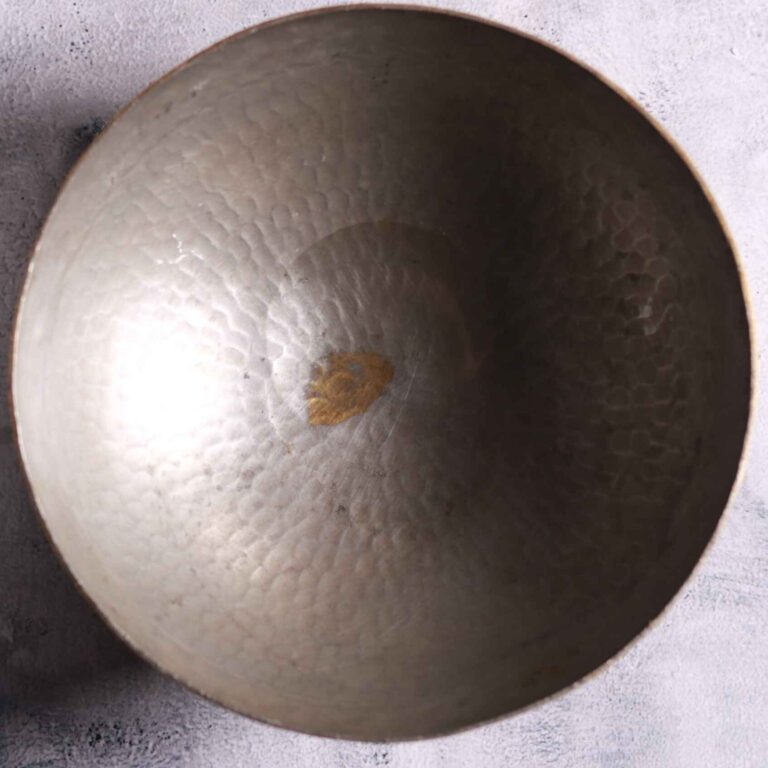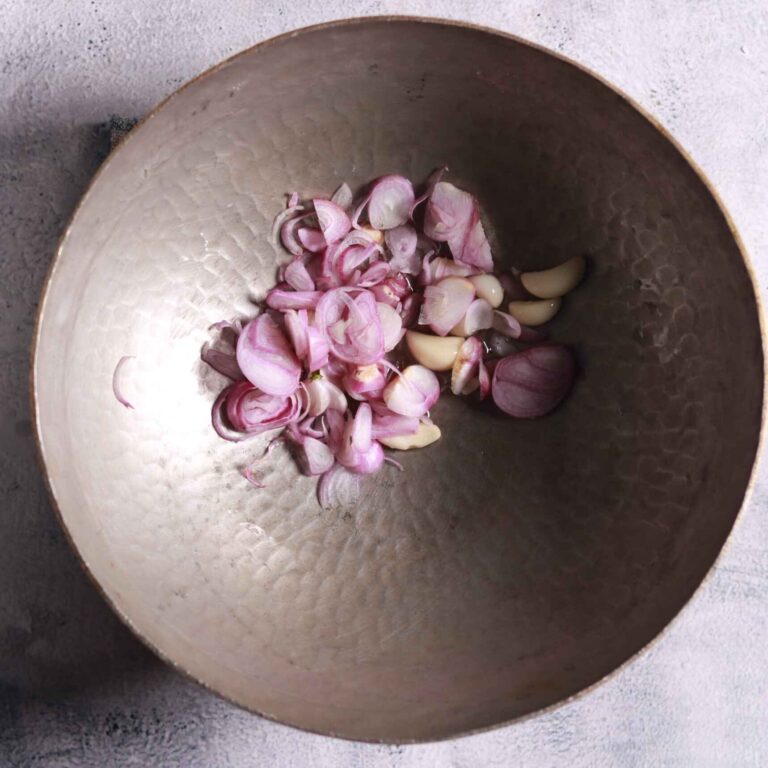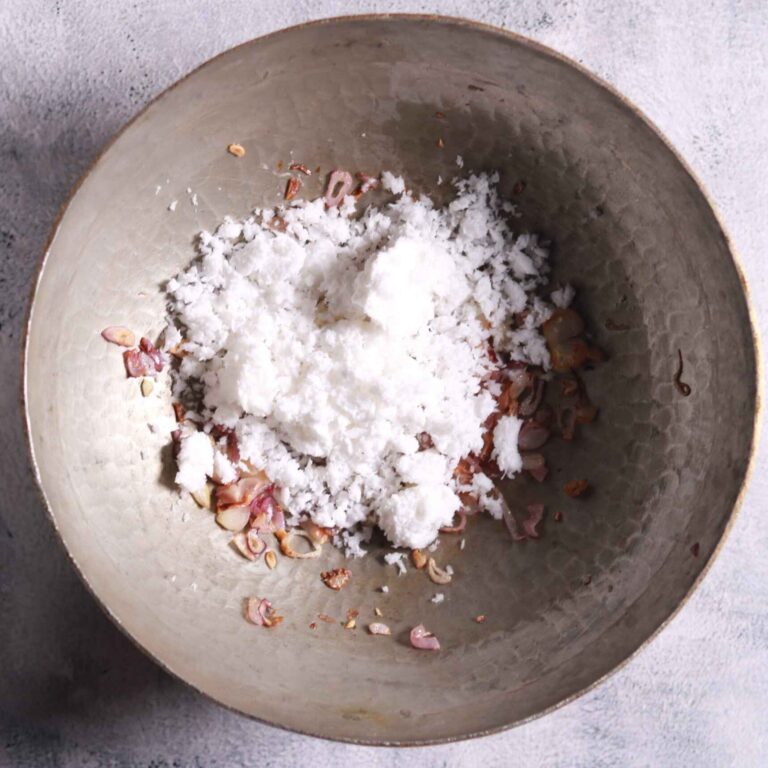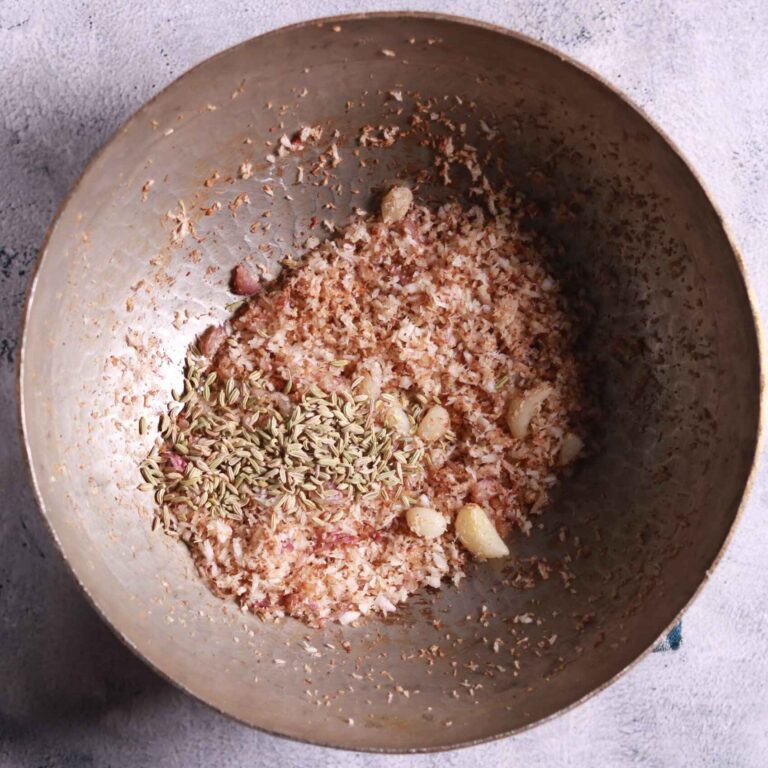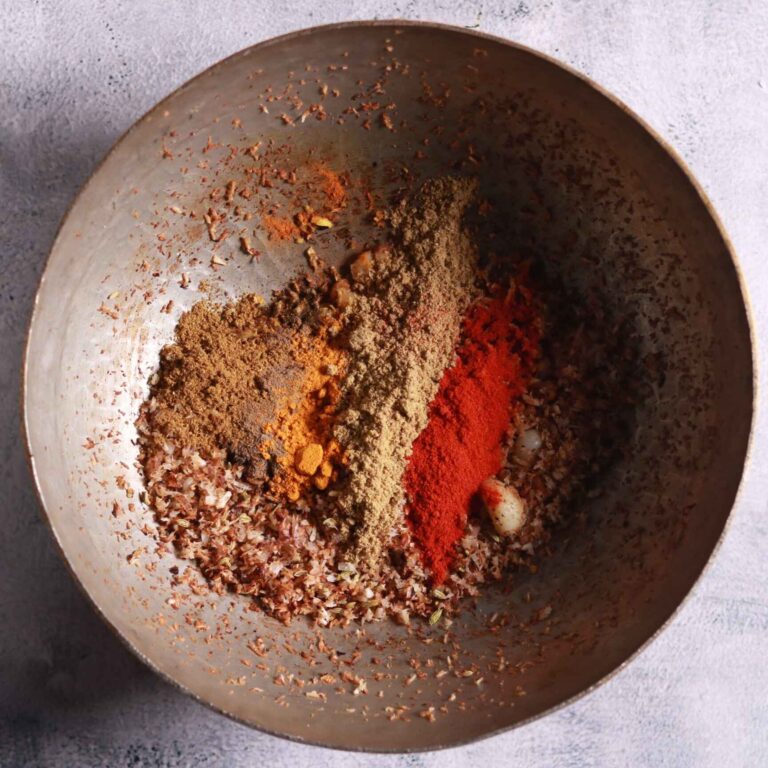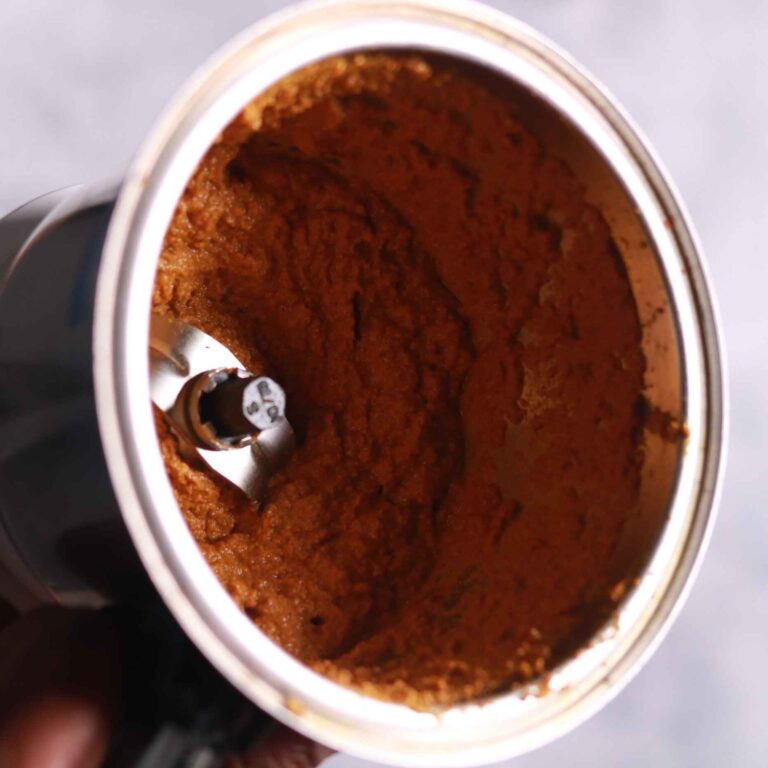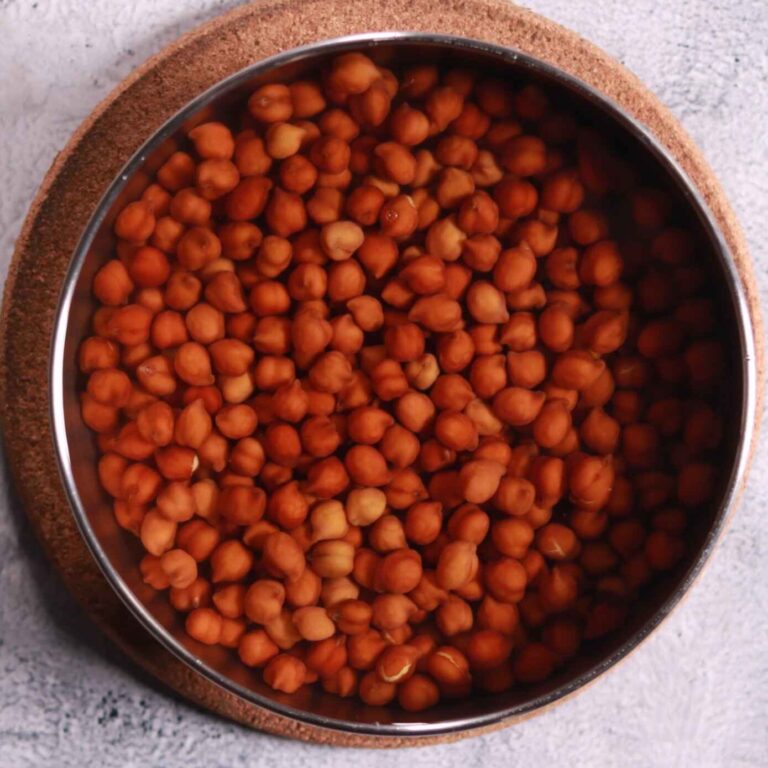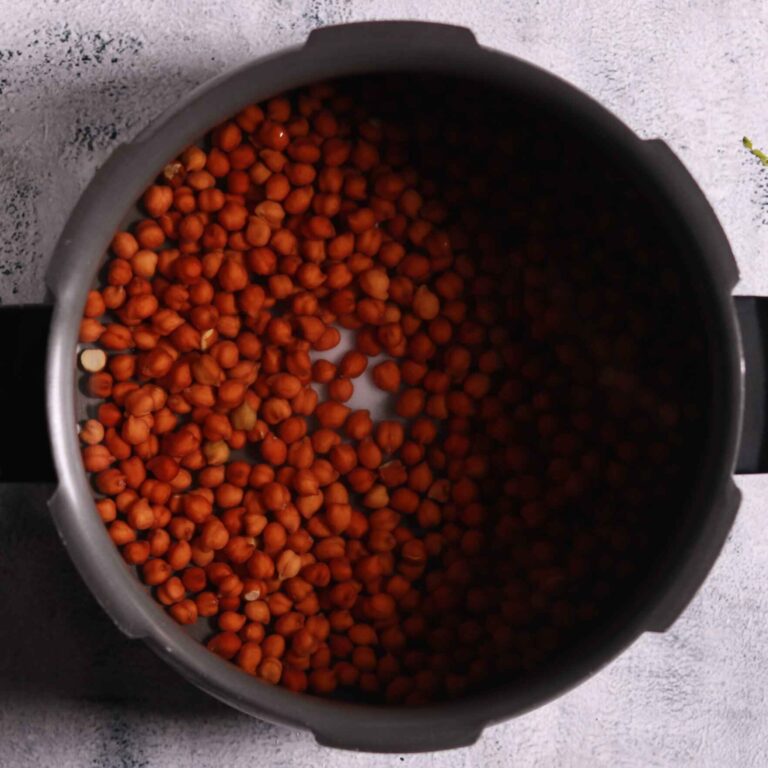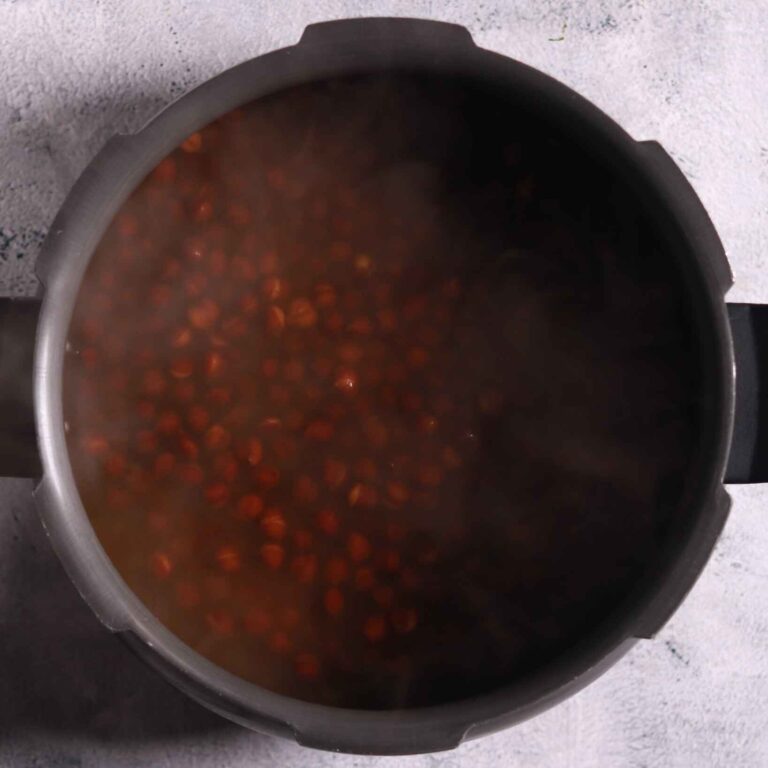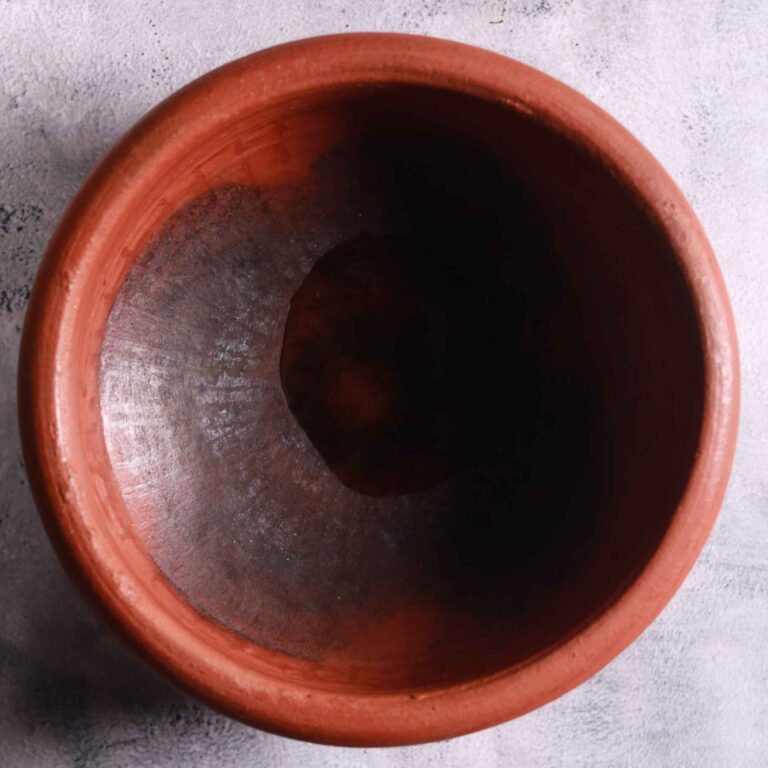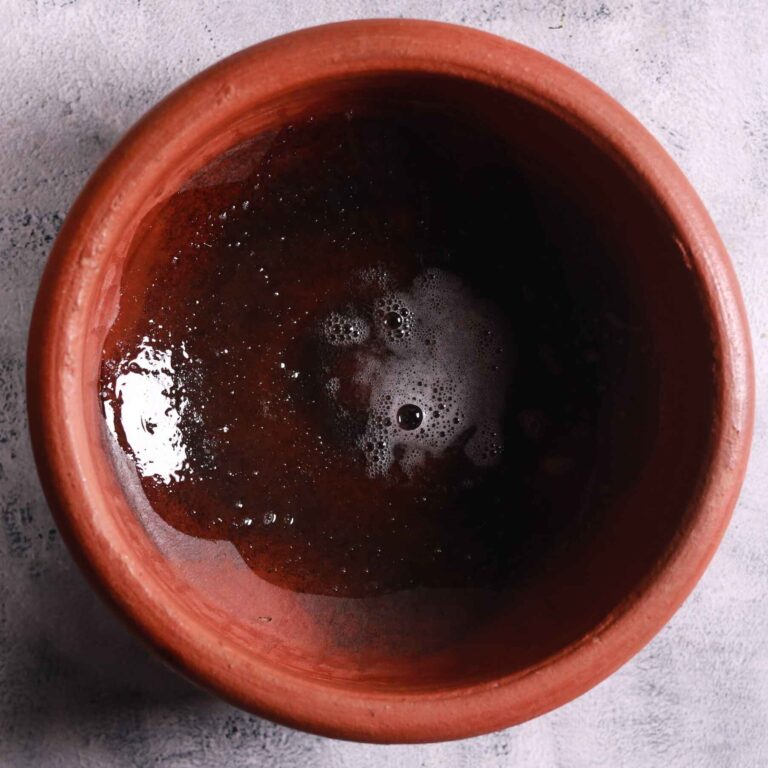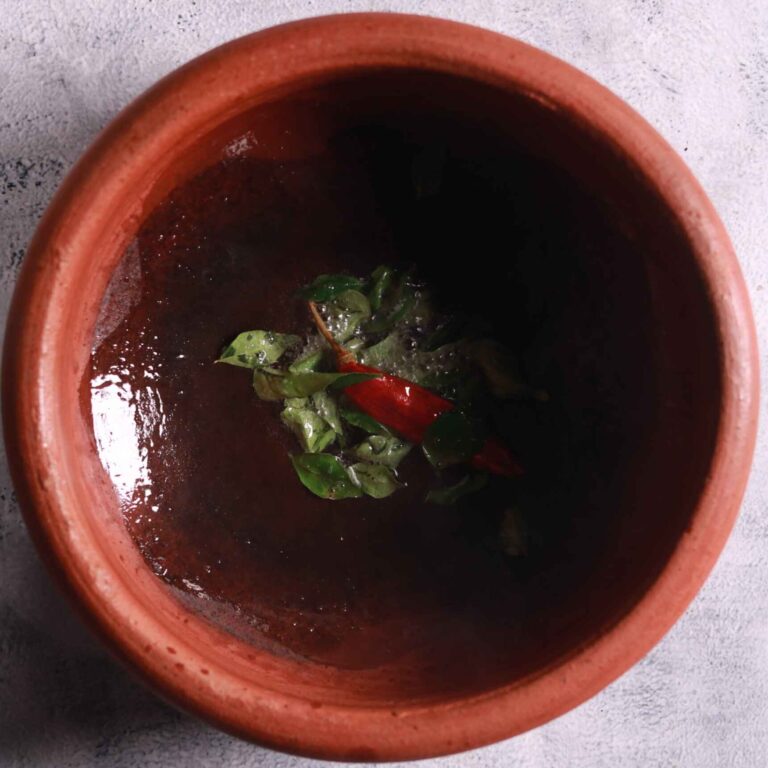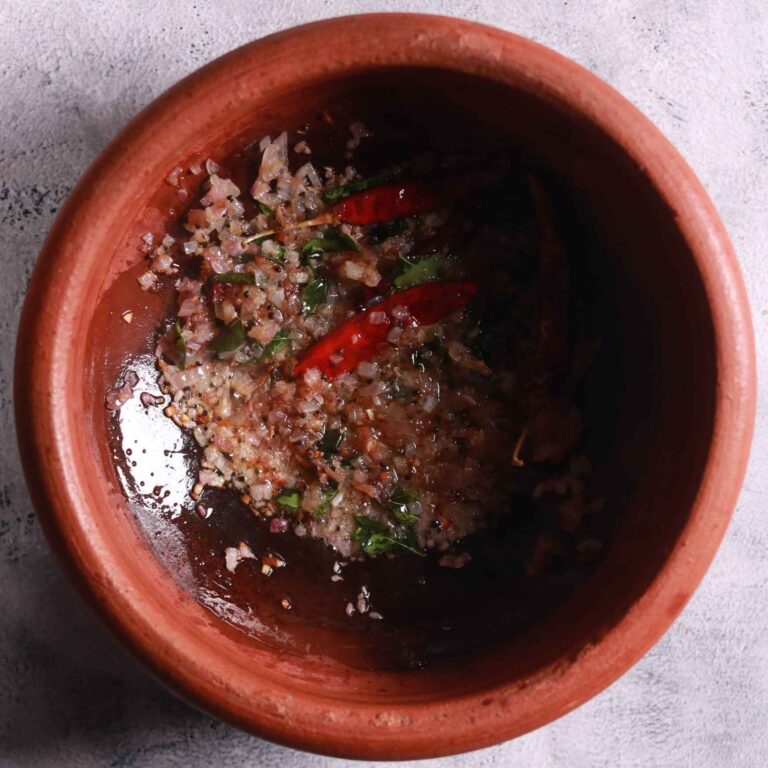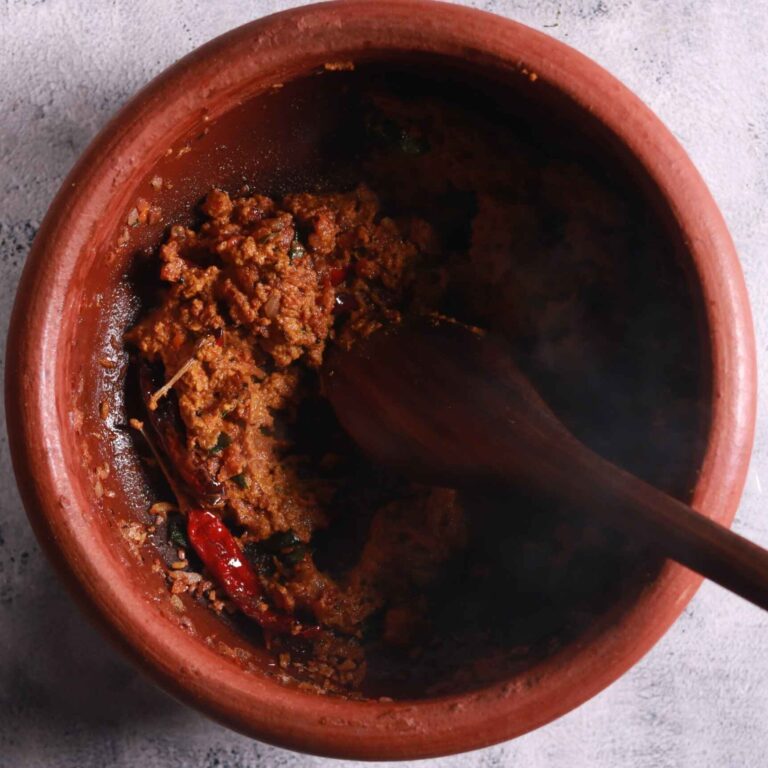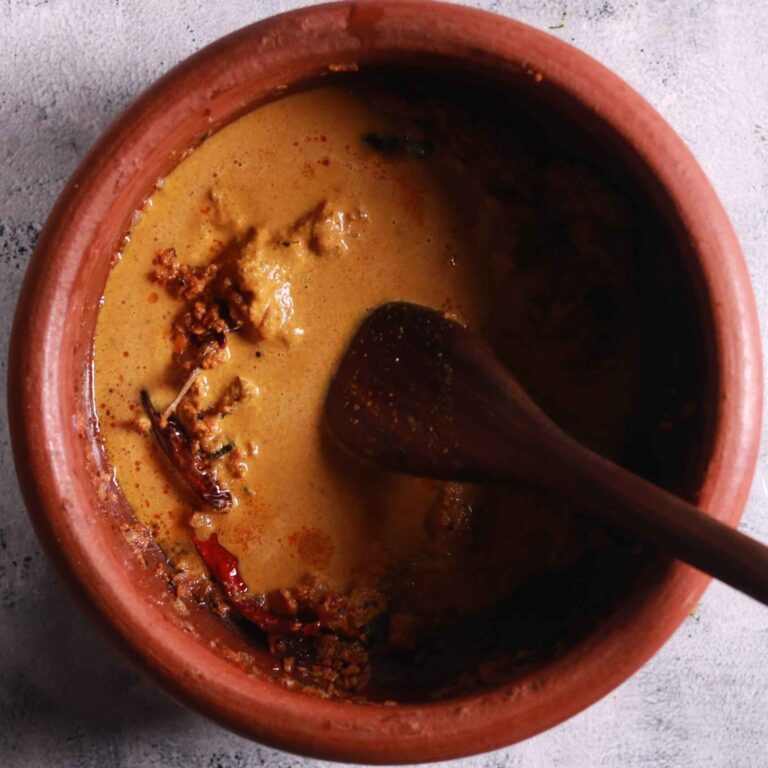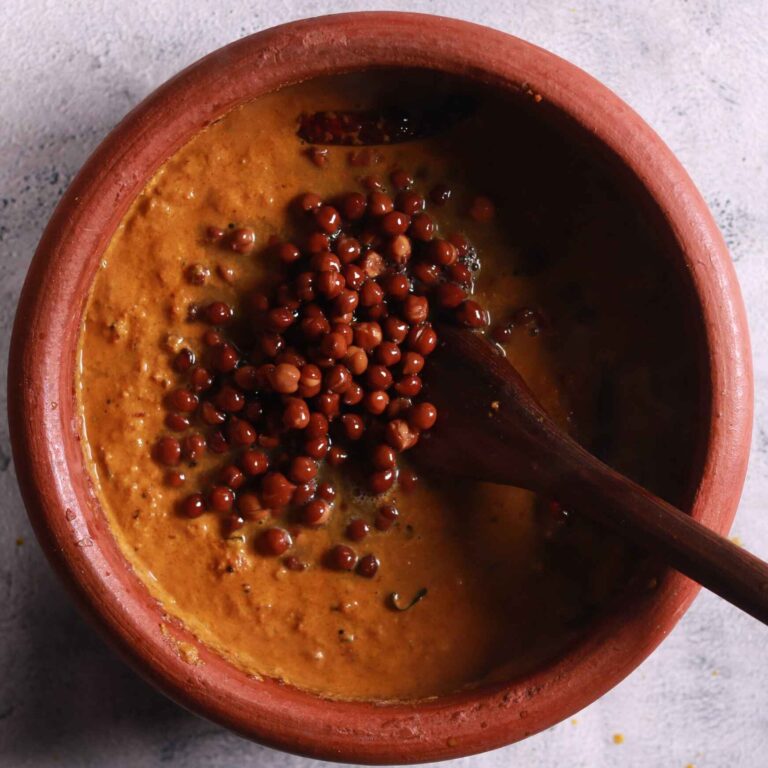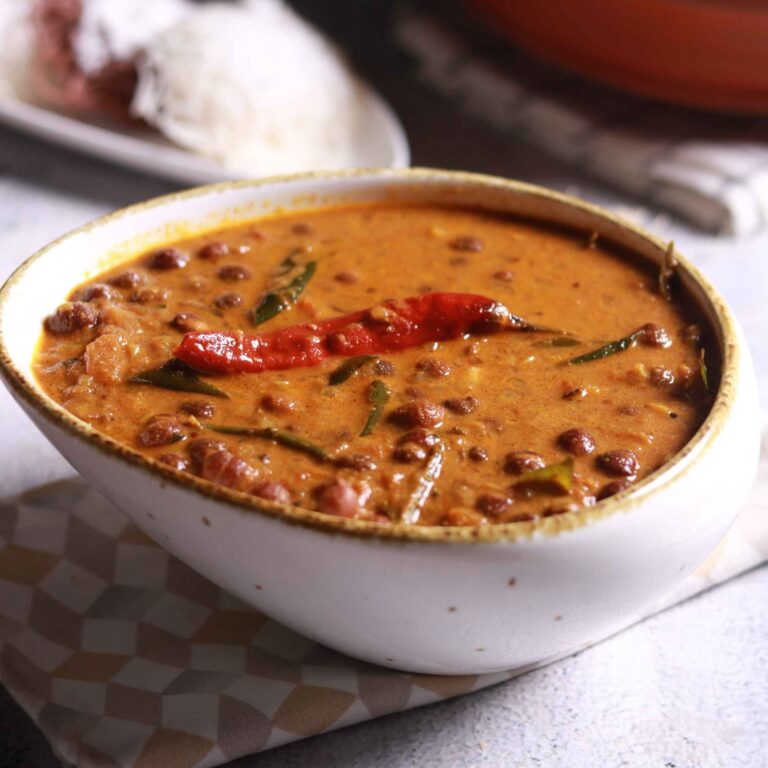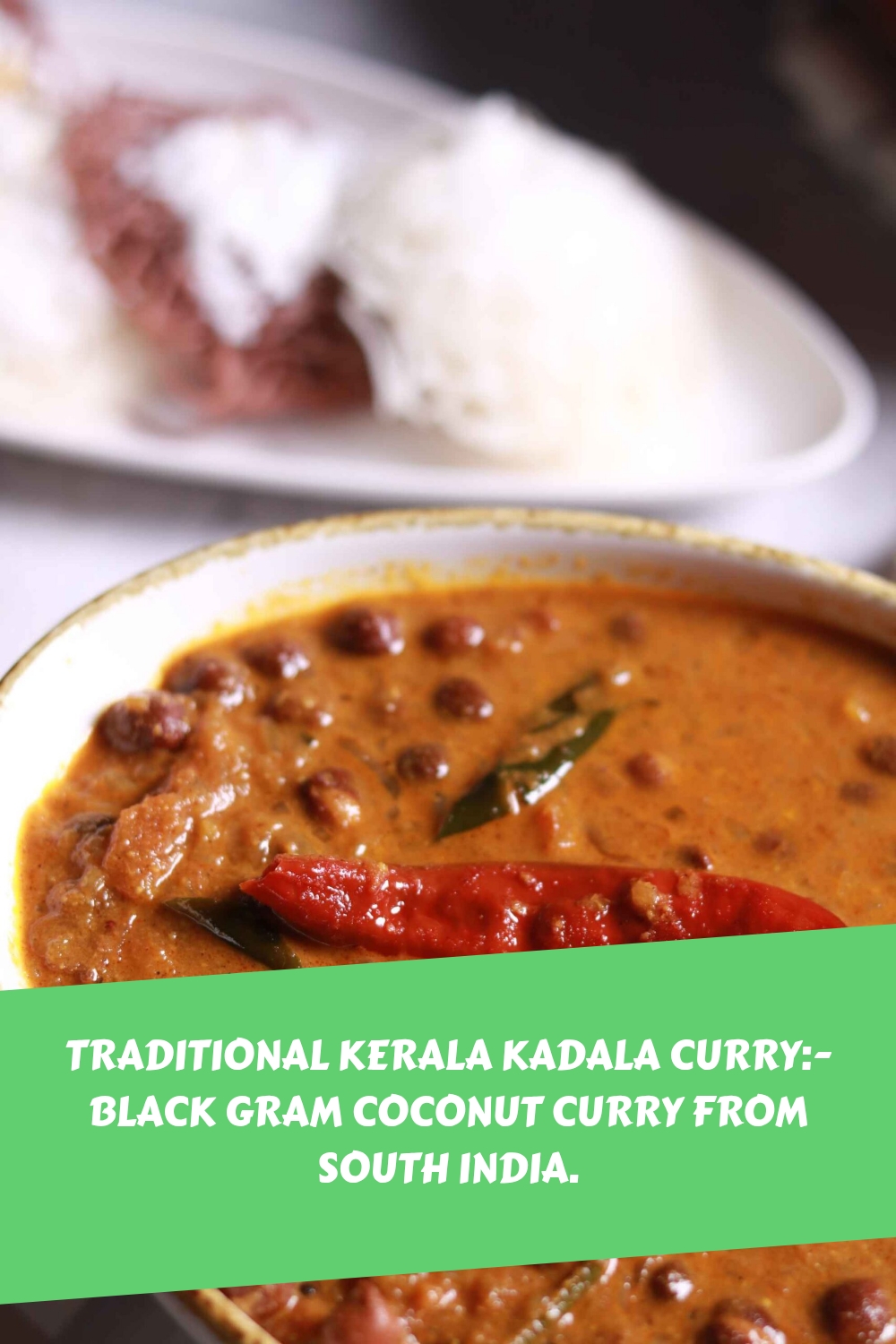If you’ve ever found yourself at a breakfast table in Kerala, chances are you’ve met a steaming bowl of Kadala Curry alongside fluffy puttu or light appams. This comforting black gram curry is a staple in Malayali homes and instantly captures the taste buds with its bold flavours, nutty black chickpeas, and that signature coconut gravy. Kadala Curry is a warm hug from South India, one that’s as nourishing as it is flavorful.
You’ll find every household has its signature spin on this recipe, but the essentials remain the same: black gram (aka kala chana or black chickpeas), aromatic spices, fresh coconut, and a generous splash of coconut oil. Ready to bring a taste of Kerala into your kitchen? Let’s dive in!
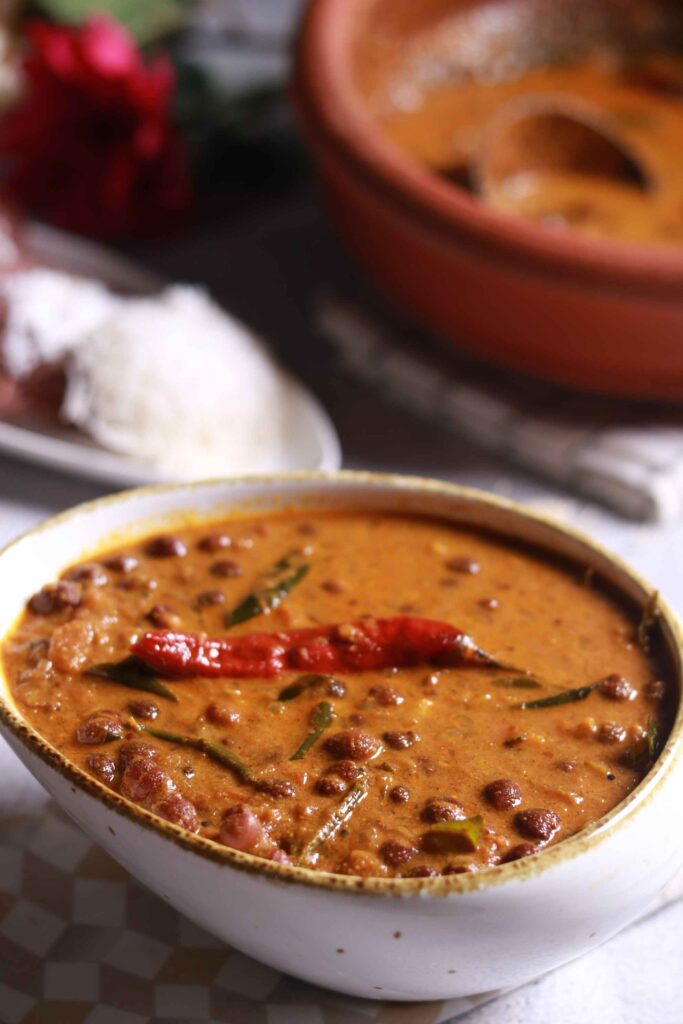
Read More Our Traditional South Indian Recipes
- Kerala Paratha: A Flaky South Indian Delicacy
- Mutton Pepper Fry (Mutton Sukka): A Spicy South Indian Delicacy
- Authentic Muttai Thokku Recipe: South Indian Egg Curry
- Lemon Rice(Chitranna): A Tangy South Indian Delight
Classic Ingredients & Their Purpose
Kadala Curry is one recipe where each ingredient has a job and a delicious one! Here’s what goes into an authentic Kerala Kadala Curry and why they matters:
- Black Gram (Kadala/Kala Chana): The earthy, nutty star of the show, packed with protein and fiber. Its robust flavor gives the curry depth, and soaking overnight ensures it cooks up soft yet firm enough to hold shape.
- Fresh Coconut: Gives the curry its characteristic richness and creamy texture. Toasted coconut in the masala adds a wonderful toasty aroma and sweetness.
- Onions & Tomatoes: Provide the sweet and tangy backbone for the gravy. Shallots are a local favorite for their mellow flavor.
- Curry Leaves, Green Chilies, Garlic, and Ginger: These aromatics offer unmistakable South Indian zest, punch, and warmth.
- Whole Spices (cloves, cinnamon, fennel, cardamom, pepper): Infuse the curry with layers of heat and aroma.
- Coconut Oil: It delivers the classic fragrance and subtly nutty taste essential to Kerala curries.
Serving Suggestions & Local Twists
In Kerala, Kadala Curry is a best buddy friend to many classic breakfasts:
- Puttu with Kadala Curry: Fluffy steamed rice cylinders team up with the saucy, hearty kadala for an unbeatable combo!
- Appam or Idiyappam: Soft, lacy rice pancakes and string hoppers love to soak up that coconut-infused gravy.
- Rice or Parotta: Don’t restrict yourself to breakfast. Kadala Curry shines with steamed rice or flaky parottas for lunch and dinner too.
Local Tips:
- For deeper flavors, dry-roast the coconut till golden before blending.
- Play with the spice levels, reduce chilli for a gentler heat or amp it up for an authentic Kerala kick.
- Adding a spoonful of coconut milk at the finish gives it a restaurant-style lushness
Kadala Curry Photo Gallery







Health Benefits of Black Gram Curry
Not only does Kadala Curry taste fabulous, but it’s also something you can feel great about eating:
- Rich in Protein & Fiber: Black gram is a powerhouse ingredient, making this dish satisfying and perfect for vegans and vegetarians.
- Nutrient Dense: Alongside protein, kadala delivers iron, magnesium, and B vitamins.
- Gut Friendly: Its high fiber aids digestion and supports gut health.
- Sustained Energy: The slow-digesting complex carbs keep you fuller for longer—ideal for busy mornings or plant-based diets.
Frequently Asked Questions
What makes Kerala Kadala Curry unique?
It’s the combination of black gram, coconut, and a tempering of coconut oil and curry leaves—distinctively Kerala and deeply aromatic.
Can I use canned black chickpeas?
You can, but soaking and cooking your own brings better texture and more flavor. If you’re short on time though, canned works in a pinch.
Is Kadala Curry vegan?
Yes, it’s fully plant-based and naturally gluten-free. Just check your masala blend for any added ingredients.
How spicy is traditional Kadala Curry?
It’s got some warm heat from chilies and pepper, but you can easily adjust the spice level to suit your taste by changing the quantity of chili and black pepper powders.
What are common mistakes to avoid?
Skipping the overnight soak (chana may not cook through), skimping on coconut (you’ll miss the classic gravy), or overcooking till the chickpeas become mushy. Keep an eye on consistency!
What’s the best way to reheat leftovers?
Gently warm on the stove, adding a little water if the curry’s thickened. The flavors actually get deeper and better the next day.
Does Kadala Curry freeze well?
Absolutely, just store in a freezer-safe container. Thaw and reheat as needed, adding a splash of water or coconut milk to refresh the gravy.
Ingredients
Kadala Curry Paste
- 1 tbsp coconut oil
- ½ cup grated coconut
- 8 no shallots sliced peeled
- 6 no garlic cloves peeled
- ½ tsp fennel seeds
- 1 tbsp coriander powder
- 1½ tsp Kashmiri red chili powder
- ½ tsp turmeric powder
- ½ tsp black pepper powder
- ¼ cup water for blending
Black Chickpeas
- 2 cup raw black chickpeas
- 2.5 to 3 cups water
- 1 tsp Salt to taste
Kadala Curry
- 2 tbsp coconut oil
- ½ tsp mustard seeds
- 3 no dried red chilies
- 1 sprig curry leaves
- 2 no onions finely chopped medium size
- 1 no tomato pure large size
- ½ tsp garam masala
Instructions
Kadala Curry Paste
- Heat 1 tbsp coconut oil in a pan over medium heat.
- Add shallots and garlic, sauté until fragrant.
- Add grated coconut and dry roast until golden brown.
- Stir in fennel seeds and roast until aromatic.
- Add coriander powder, red chili powder, turmeric, and black pepper powder. Mix well.
- Let the mixture cool before blending it with ¼ cup water into a smooth paste.
Kerala Kadala Curry
- In a bowl, soak black chickpea for 8 – 10hrs. Drain the soaked chickpeas and rinse them well.
- Add chickpeas, water, and salt to a pressure cooker.
- Pressure cook for 4 to 5 whistles or until soft. Set aside with the cooking water.
- Heat 2 tbsp coconut oil in a pan over medium heat.
- Add mustard seeds and let them splutter.
- Toss in dried red chilies and curry leaves, sauté briefly.
- Add chopped onions and sauté until golden brown.
- Add tomatoes pure simmered until oil releases
- Stir in the prepared masala paste and garam masala. Cook for 2–3 minutes until oil separates.
- Pour in the cooked chickpeas along with their cooking water.
- Simmer for 5–7 minutes, allowing the flavors to blend. Turn off the heat
- Serve hot with puttu, appam, dosa, or steamed rice.

